
Back رأس المال الطبيعي Arabic Природен капитал Bulgarian Přírodní kapitál Czech Naturkapital German Capital natural Spanish Looduskapital Estonian Ondare natural Basque سرمایه طبیعی Persian Capital naturel French Természeti tőke Hungarian
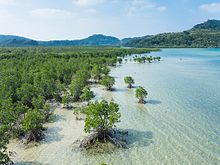

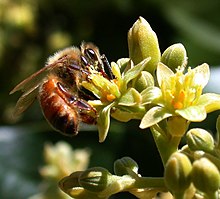
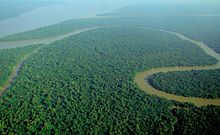
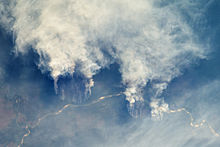
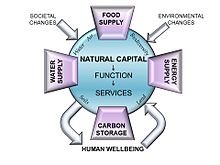
Natural capital is the world's stock of natural resources, which includes geology, soils, air, water and all living organisms. Some natural capital assets provide people with free goods and services, often called ecosystem services. All of these underpin our economy and society, and thus make human life possible.[3][4]
It is an extension of the economic notion of capital (resources which enable the production of more resources) to goods and services provided by the natural environment. For example, a well-maintained forest or river may provide an indefinitely sustainable flow of new trees or fish, whereas over-use of those resources may lead to a permanent decline in timber availability or fish stocks. Natural capital also provides people with essential services, like water catchment, erosion control and crop pollination by insects, which in turn ensure the long-term viability of other natural resources. Since the continuous supply of services from the available natural capital assets is dependent upon a healthy, functioning environment, the structure and diversity of habitats and ecosystems are important components of natural capital.[5] Methods, called 'natural capital asset checks', help decision-makers understand how changes in the current and future performance of natural capital assets will impact human well-being and the economy.[6] Unpriced natural capital is what we refer to when businesses or individuals exploit or abuse nature without being held accountable, which can harm ecosystems and the environment. [7][8][9]
- ^ Valiela, Ivan; Bowen, Jennifer L.; York, Joanna K. (2001). "Mangrove Forests: One of the World's Threatened Major Tropical Environments". BioScience. 51 (10): 807–815. doi:10.1641/0006-3568(2001)051[0807:mfootw]2.0.co;2. ISSN 1525-3244. Retrieved 5 January 2016.
- ^ "Why are Rainforests Important?". www.rainforestconcern.org. Archived from the original on 2016-01-20. Retrieved 5 January 2016.
- ^ "What is natural capital?". naturalcapitalforum.com. World Forum on Natural Capital. Archived from the original on 6 October 2019. Retrieved 31 December 2015.
- ^ "What is Natural Capital". www.naturalcapitalcoalition.org. Natural Capital Coalition. Archived from the original on 2 June 2016. Retrieved 31 December 2015.
- ^ "Search – The Encyclopedia of Earth". www.eoearth.org.
- ^ "UK NEAFO Work Package 1: Natural capital asset check – Annex 4: Case studies". uknea.unep-wcmc.org. UK National Ecosystem Assessment. p. 3. Retrieved 31 December 2015.
- ^ "What is natural capital?". European Investment Bank. Retrieved 2023-07-19.
- ^ "What is natural capital and why companies need to take interest in it?". Manutan. Retrieved 2023-07-19.
- ^ "Natural capital accounting". environment.ec.europa.eu. Retrieved 2023-07-19.
© MMXXIII Rich X Search. We shall prevail. All rights reserved. Rich X Search